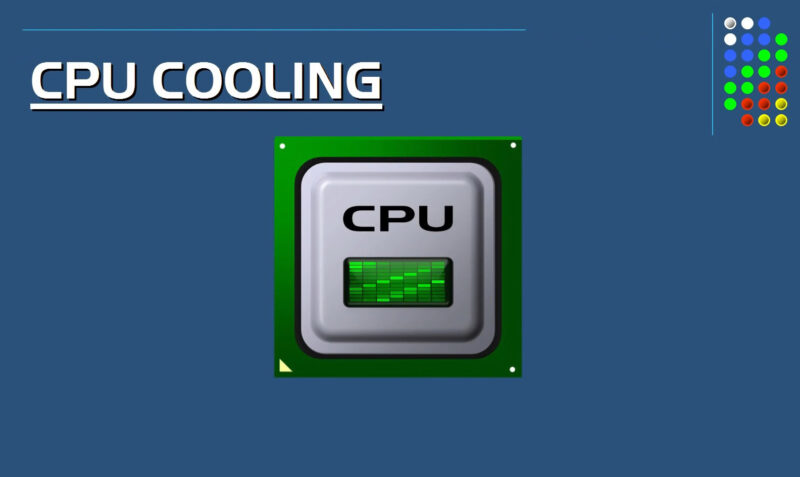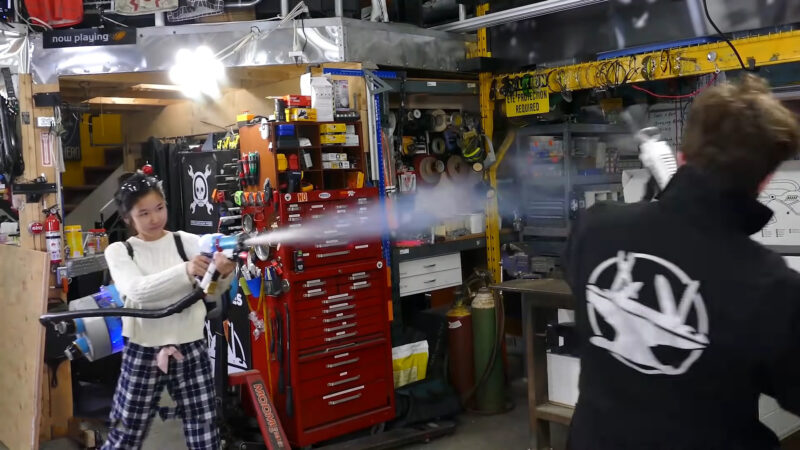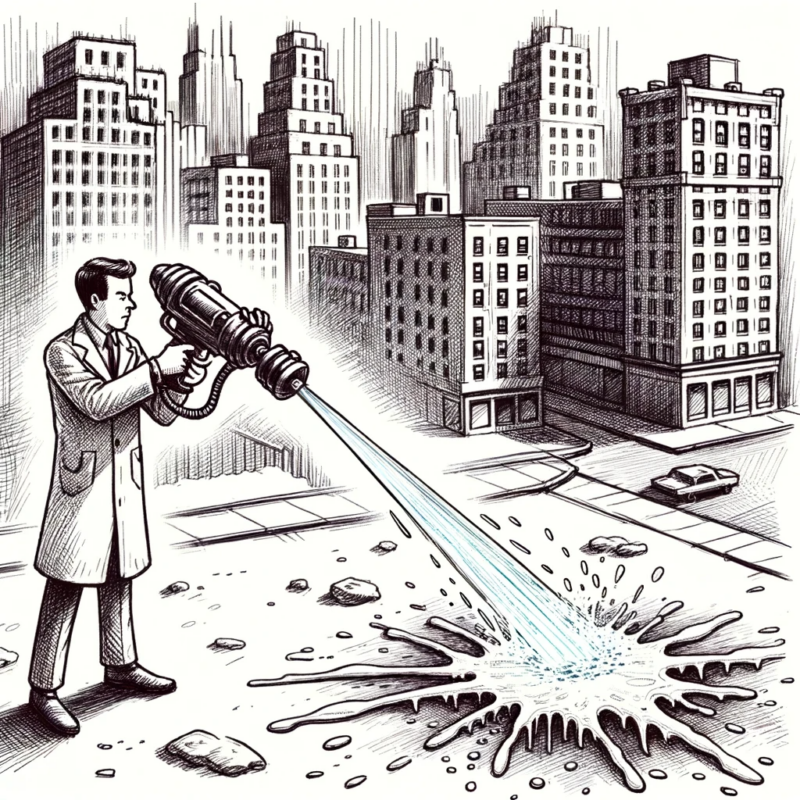In a world where science fiction often becomes science fact, the latest breakthrough from the University of Washington is nothing short of astonishing. Researchers have successfully created a real-life freeze ray, reminiscent of the chilling weapon wielded by iconic villains like Mr. Freeze.
This groundbreaking discovery has the potential to revolutionize various fields, from computing to biology.
The Fiction Becomes Reality
Mr. Freeze, the iconic Batman villain, may soon have competition in the real world. A team of dedicated scientists from the University of Washington has achieved the seemingly impossible: cooling liquid using a laser.
This discovery challenges our traditional understanding of lasers, which have always been associated with heat.
“Typically, when you go to the movies and see Star Wars laser blasters, they heat things up. This is the first example of a laser beam that will refrigerate liquids like water under everyday conditions,” remarked senior author Peter Pauzauskie.
The Science Behind the Freeze Ray
Lasers, in both fiction and reality, have predominantly been tools of heat. However, this study, soon to be published in the Proceedings of the National Academy of Sciences, flips that notion on its head. The researchers achieved refrigeration of liquid using an infrared laser, a feat previously thought to be unattainable.
- The Reverse Mechanism: To accomplish this, the scientists made the laser operate in reverse. Instead of emitting heat, the infrared laser light illuminated a microscopic crystal suspended in water. This illumination caused the crystal to glow with an energy slightly higher than what it absorbed.
- Cooling Effect: This higher-energy glow directed heat away from the crystal and the surrounding water. The result? The water around the crystal was effectively cooled down.
Potential Applications of the Freeze Ray

The implications of this discovery are vast. The “point cool” system, as it’s being termed, allows for the refrigeration of minuscule areas using focused light points.
This precision cooling has a myriad of potential applications.
- Microprocessor Cooling: One of the primary applications the researchers foresee is in the realm of computing. Microprocessors could use this method to cool specific areas of computer chips, preventing potential overheating issues.
- Biological Insights: Beyond computing, the biological applications are staggering. By refrigerating specific cellular areas, scientists can observe processes like cell division and repair in unprecedented detail.
“There’s a lot of interest in how cells divide and how molecules and enzymes function, and it’s never been possible before to refrigerate them to study their properties,” Pauzauskie noted. “Using laser cooling, it may be possible to prepare slow-motion movies of life in action.”
Broader Implications and Future Prospects

While the current research has been demonstrated on single nanocrystals, the team envisions a future with large-scale applications. Industries ranging from manufacturing to telecommunications, and even defense, could benefit from this technology.
“Few people have thought about how they could use this technology to solve problems because using lasers to refrigerate liquids hasn’t been possible before,” said lead author Paden Roder. “We are interested in the ideas other scientists or businesses might have for how this might impact their basic research or bottom line.”
The Defense and Telecommunication Angle
The defense industry is always on the lookout for cutting-edge technologies. The ability to cool specific components or areas could have implications for weapons development, surveillance, and more.
On the other hand, the telecommunications sector, which often grapples with overheating issues in data centers, could leverage this technology to enhance efficiency and reduce costs.
Manufacturing and Beyond
In the manufacturing sector, precision cooling could be a game-changer. Whether it’s in the production of delicate electronics or the crafting of specialized materials, the ability to cool specific areas without affecting the entire product could lead to enhanced quality and reduced wastage.
The Environmental Impact
In an era where climate change and sustainability are at the forefront of global discussions, any new technology must be evaluated for its ecological impact.
Energy Efficiency and Carbon Footprint
One of the most significant advantages of the freeze ray technology is its potential for energy efficiency. Traditional cooling methods, whether in industrial settings or household appliances, consume vast amounts of electricity.
This not only leads to higher costs but also contributes to a larger carbon footprint.
- Reduced Energy Consumption: The precision cooling offered by the freeze ray means that only specific areas or components need to be cooled, potentially reducing overall energy consumption.
- Lower Greenhouse Gas Emissions: With reduced energy consumption comes a decrease in greenhouse gas emissions, especially if the electricity source is non-renewable.
Potential in Climate Control
Beyond its immediate applications, the freeze ray could play a role in larger climate control projects. By scaling up the technology, there’s potential for its use in environmental endeavors.
- Cooling Urban Heat Islands: Major cities around the world suffer from the “urban heat island” effect, where metropolitan areas are significantly warmer than their rural surroundings. Strategic deployment of freeze-ray technology could help mitigate this effect.
- Preserving Polar Ice: On a more ambitious scale, there’s potential for the freeze ray to be used in projects aimed at preserving or even restoring polar ice caps, though this would require significant advancements and scalability.
Ethical Considerations
![]()
With every groundbreaking discovery comes a set of ethical dilemmas. The freeze ray, despite its promise, is no exception.
As we harness its power, it’s crucial to navigate the moral maze that accompanies it.
Weaponization Concerns
Given its potential applications in the defense sector, there’s a genuine concern about the freeze ray’s weaponization. While the current technology focuses on cooling, in the wrong hands, it could be modified for harmful purposes.
- International Regulations: To prevent misuse, international bodies must establish regulations and oversight concerning the freeze ray’s deployment in defense and warfare.
- Transparency in Research: Open dialogue and transparency in research findings can ensure that the technology is used for the betterment of society and not for destructive purposes.
Economic Disruptions
The introduction of any revolutionary technology can lead to economic disruptions. Industries reliant on traditional cooling methods might face challenges, leading to job losses and economic shifts.
- Re-skilling and Training: As the freeze ray becomes more mainstream, there will be a need for training programs to equip the workforce with the necessary skills to operate and maintain this new technology.
- Economic Diversification: Industries must diversify and adapt to incorporate the freeze ray into their operations, ensuring economic stability and growth.
FAQ
What is the primary material used in the freeze ray?
The primary material used in the freeze ray is a microscopic crystal that is suspended in water. This crystal is illuminated by the infrared laser to achieve the cooling effect.
How safe is the freeze ray for human exposure?
As of now, the freeze ray has been tested primarily on nanocrystals. Direct human exposure has not been extensively studied, and caution is advised until more research is conducted.
Can the freeze-ray technology be integrated into household appliances?
While the primary focus has been on industrial and scientific applications, there’s potential for the technology to be adapted for household use in the future, especially in cooling systems.
How soon can we expect commercial applications of the freeze ray?
The timeline for commercial applications will depend on further research, scalability tests, and industry interest. It might be a few years before we see widespread commercial use.
Are there any known side effects of using the freeze ray on biological entities?
The potential for using the freeze ray on cells has been discussed, but extensive studies on side effects or long-term impacts on biological entities are still pending.
How does the freeze ray compare in terms of cost to traditional cooling methods?
It’s too early to provide a definitive cost comparison. However, given its energy efficiency, there’s potential for cost savings in the long run.
Is the freeze-ray technology patented?
Specific details about patents would need to be sourced directly from the University of Washington or the research team involved.
Final Words
The real-life freeze ray is more than just a scientific marvel; it represents the boundless possibilities of human innovation. As we continue to explore its applications, from microprocessors to massive climate control projects, it’s evident that this technology will shape our future in ways we can only begin to imagine.
However, with great power comes great responsibility. It’s up to us to ensure that the freeze ray is used ethically, sustainably, and for the betterment of all.













